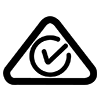This information is for importers, manufacturers and retailers (including online retailers) of household electrical appliances and accessories.
Who is the Responsible Supplier?
In Tasmania any person or business that supplies electrical appliances or equipment is considered a:
- supplier
- seller or
- responsible supplier.
A person or business who is the first supplier in Australia is the Responsible Supplier when they manufacture or import electrical equipment or appliances. However the person who sells the product to the end user is the Supplier.
In Tasmania a person or business becomes a Subsequent Supplier when they purchase electrical equipment or appliances for re-sale from a registered Responsible Supplier who can be a wholesaler, importer or manufacturer in another state, territory or New Zealand.
Examples of a supplier
- A retail business selling a single item, for example a phone charger
- An electrical contractor installing a ceiling fan that they have supplied
- A builder contracting to build a home and includes electrical equipment and appliances
- A rental company providing rental or lease of household appliances
- A landlord providing a rental property that includes household appliances.
All of these examples are considered suppliers of electrical equipment. In most cases, the manufacturers, importers or wholesalers meet the compliance requirements and are the Responsible Supplier.
Second/subsequent suppliers (not Responsible Suppliers)
By participating in the Electrical Equipment Safety System (EESS), second or subsequent suppliers of in-scope electrical equipment must:
- source equipment from a Responsible Supplier who is registered on the EESS Registration Database, and
- ensure Level 2 and Level 3 equipment is registered on the EESS Registration Database against the registered Responsible Supplier, and
- ensure equipment is marked with the Regulatory Compliance Mark (RCM) in accordance with requirements listed in:
- AS/NZS 4417.1 Regulatory compliance mark for electrical and electronic equipment Use of the mark and
- AS/NZS 4417.2 Regulatory compliance mark for electrical and electronic equipment Specific requirements for particular regulatory requirements
Examples of second/subsequent supplier of In-scope electrical equipment
- wholesaler
- retailer
- on-line sellers
- electrical contractors
Search the Australian Certification Database to see if your supplier is a registered responsible supplier.
The sale of electrical equipment and appliances is also subject to the requirements of the Electricity Industry Safety and Administration Act 1997
In Tasmania in-scope electrical equipment must meet the following three criteria before being offered for sale:
- Comply with the relevant standard
- Be approved
- Be marked to indicate that it is approved (the RCM)
It is illegal to sell non-compliant electrical products. Failure to comply with these requirements may be considered a breach of legislation that carries penalties.
In-scope electrical equipment requirements
| Level | Requirement |
|---|---|
| Level 1 |
|
| Level 2 |
|
| Level 3 |
|
For electrical equipment that is not considered in-scope (such as commercial and industrial equipment), the following applies:
- The equipment must be safe and fit for purpose
- Installed equipment must comply with the relevant Australian standard
- The person conducting the business or undertaking must identify reasonably foreseeable hazards that could give rise to risks to health and safety. To apply relevant Australian standard/s is strongly recommended.
Secondhand electrical equipment
Retailers including tip shops and antique stores who sell secondhand electrical articles must ensure that electrical articles have a label stating:
- the article certifying the electrical equipment has been tested by a competent person and found to be safe.
- the electrical article has not been tested to ensure it can be safely operated.
Download a copy of the Guide to meeting the secondhand electrical equipment requirements (PDF, 387.2 KB) which includes examples.
Recognised approval numbers in Australia
Regulations and Standards apply to all electrical equipment sold or offered for supply in Australia.
Certain types of equipment are classified as prescribed. Legislation defines prescribed equipment as being specified as Level 2 or Level 3 equipment in Australian/New Zealand Standard 4417.2. A summary of the list of prescribed equipment can be found in the In-scope electrical equipment definitions and risk levels for the Electrical Equipment Safety System (EESS). These pieces of equipment must go through a certification process which ensures the equipment is compliant to the relevant safety standards before being offered for supply in Australia.
 Regulatory Compliance Mark (RCM)
Regulatory Compliance Mark (RCM)
Prescribed electrical products must have an RCM on the appliance OR an Australian approval number to show that the product has been certified.
It is an offence for the mark to appear on a product that does not meet the requirements of the Electrical Equipment Safety System (EESS).
This mark is currently recognised by all Australian states and territories.
Recognised approval numbers
| State regulator | Organisation name | Approval number or mark |
|---|---|---|
| Tasmania | WorkSafe Tasmania | T<number>* |
| Victoria | Energy Safe Victoria (ESV) |
ESV<number> V<number> |
| New South Wales | NSW Fair Trading | NSW<number> |
| Queensland | Electrical Safety Office (ESO) |
ESO<number> Q<number> |
| South Australia | Office of the Technical Regulator | S<number> |
| Electrical Equipment Safety System | Approval mark |
|---|---|
| EESS Conformity Certification (CCS) | 
|
| Queensland Electrical Safety Office (ESO) | 
|
| NSW recognised external certification body | Approval number or mark |
|---|---|
| International Testing and Certification Services Pty Ltd | A/<number>/EA |
| SAI Global Certification Services Pty Ltd |
SAI TE EA
SAI SMK EA SAI- |
| SAA Approvals Pty Ltd | SAA <number> EA |
| Testing and Certification Australia | TCA <number> EA |
| UL International New Zealand Limited | U <number> EA |
| TUV Rheinland Australia Pty Ltd | TUV <number> EA |
| BSI Group (Australia and New Zealand) Pty Ltd | BSI-<number>-EA |
| Global Mark Pty Ltd | GMA-<number>-EA |
| Market Access (AUS) Pty Ltd trading as Certification Body Australia | CBA <number> |
| Australian Safety Approval | ASA-<number>-EA |
| SGS Australia | SGS EA <number> |
| The Australian Gas Association (AGA) | AGA <number> G EA |
Equipment approvals database (EESS)
Search the Electrical Equipment Safety System (EESS) database which registers responsible suppliers and equipment. Sellers of electrical equipment in Tasmania are responsible for making sure the responsible supplier is registered. Prescribed equipment must also be registered.
This page has been produced and published by the Consumer Building and Occupational Services Division of the Department of Justice. Although every care has been taken in production, no responsibility is accepted for the accuracy, completeness, or relevance to the user's purpose of the information. Those using it for whatever purpose are advised to verify it with the relevant government department, local government body or other source and to obtain any appropriate professional advice. The Crown, its officers, employees and agents do not accept liability however arising, including liability for negligence, for any loss resulting from the use of or reliance upon the information and/or reliance on its availability at any time.

